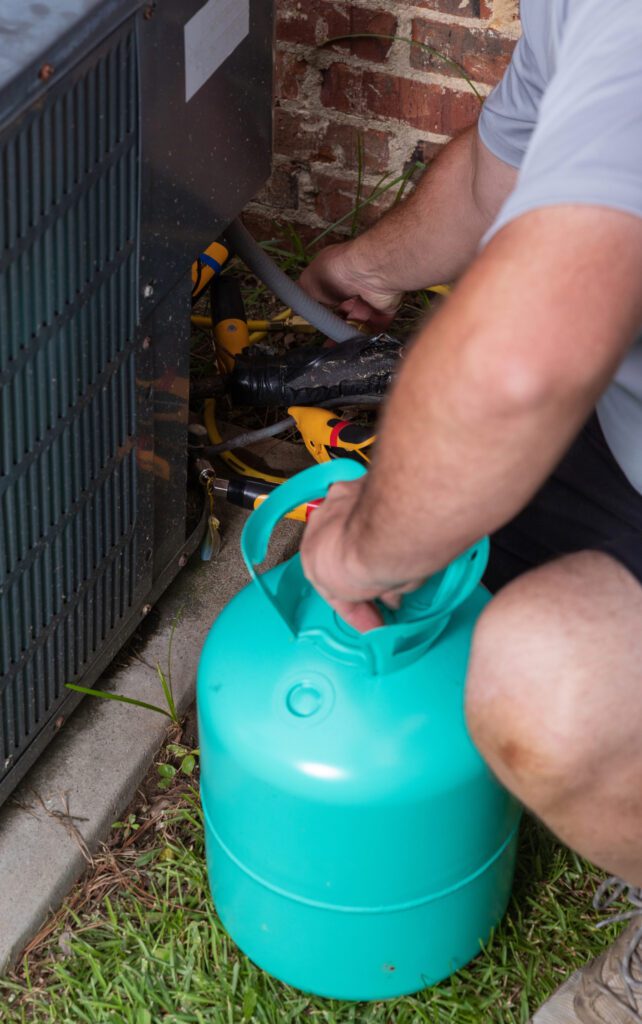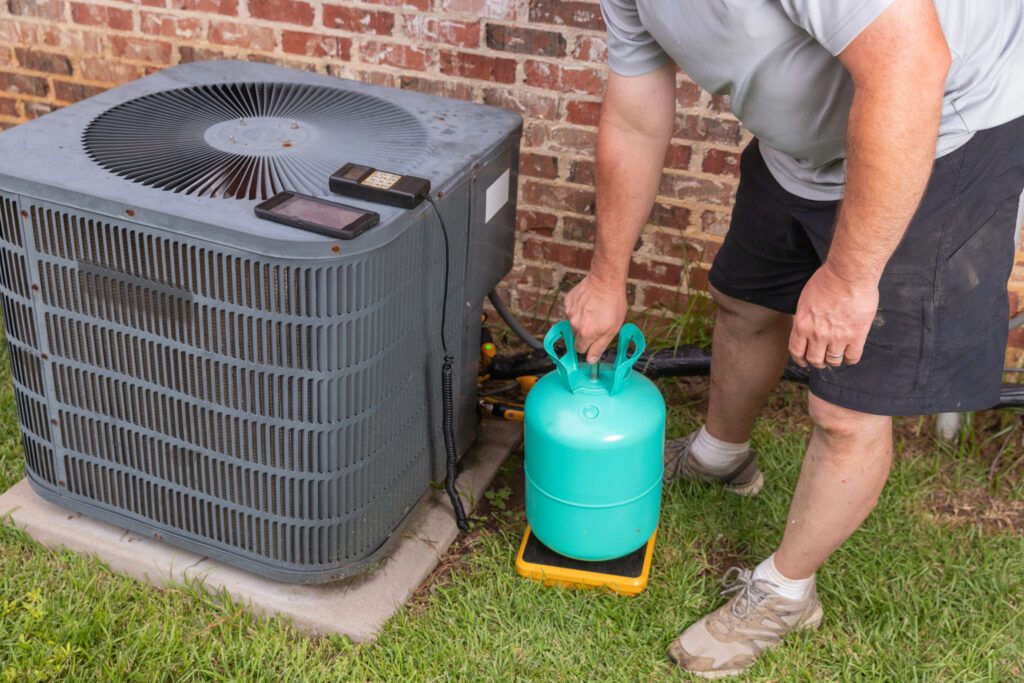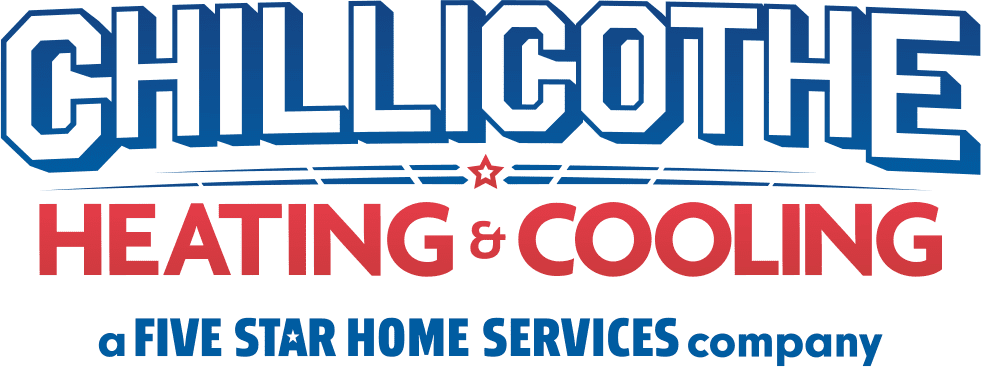Is R-410A Refrigerant on the Way Out? What You Need to Know for 2025 and Beyond
As the world becomes increasingly focused on combating climate change and promoting environmental sustainability, industries worldwide are reassessing and adjusting their practices to align with stringent environmental regulations. Within the HVAC industry, refrigerants have become a hot topic of debate. One refrigerant drawing particular attention is R-410A, and it’s critical to comprehend the potential phase-out of this refrigerant along with its implications for manufacturers, consumers, and the environment.

1. The Function of Refrigerants in HVAC Systems
Refrigerants are chemical substances used in air conditioning and heat pump systems. They are vital for absorbing and expelling heat, enabling the cooling or heating of spaces. Over time, the HVAC industry has evolved, introducing new refrigerants that strive to balance efficiency with lower environmental impact.
R-410A, a hydrofluorocarbon (HFC), was initially brought in as a greener option compared to older chlorofluorocarbon (CFC) and hydrochlorofluorocarbon (HCFC) refrigerants, which were detrimental to the ozone layer. However, despite having no ozone depletion potential, R-410A has a high global warming potential (GWP), prompting discussions about its phase-out.
2. The Drive for Eco-Conscious Alternatives
The movement to phase out R-410A and other HFC refrigerants is primarily driven by international agreements and regulatory bodies aiming to decrease greenhouse gas emissions. The Kigali Amendment to the Montreal Protocol, adopted in 2016, is an example of an agreement designed to curtail HFC use.
It establishes a timeline for reducing and ultimately eliminating high-GWP HFCs. Developed countries, such as the United States and European regions, are targeting a reduction to 15%-25% of baseline levels by the mid-2030s.
3. The Future Timeline for R-410A
Although R-410A’s phase-out is assured, specific timelines for its discontinuation are still being worked on. While there’s no conclusive ban planned for 2025, several measures to reduce R-410A usage are already underway:
- Regulatory Mandates: Numerous countries are implementing stricter regulations regarding the production and import of R-410A. For instance, the European Union has set timelines under the F-Gas Regulation, and the Environmental Protection Agency (EPA) in the United States has outlined phasedown plans.
- Industry Adaptations: The HVAC industry is rapidly evolving to meet these new regulations by investigating alternative refrigerants with lower GWPs. Options like R-32, R-454B, and R-466A are becoming popular as suitable replacements for new systems.
- Market Transition: As regulations change, manufacturers are transitioning to these newer refrigerants. This shift drives market transformation, emphasizing the production and upgrading of systems compatible with lower-GWP refrigerants.
4. Alternatives to R-410A
- R-32: With half the GWP of R-410A and increased energy efficiency, R-32 is a promising option. It’s gaining acceptance in many new systems, particularly in regions with aggressive climate policies.
- R-454B: Known for its balance, R-454B has an even lower GWP and operates under similar pressures, facilitating a smoother transition for manufacturers and consumers alike.
- R-466A (Solstice N41): Praised for its safety and efficiency, R-466A is another viable contender. It’s non-flammable in its pure form, providing a safety advantage over some alternatives.
5. The Implications of the Phase-Out
For Manufacturers
Manufacturers are leading the charge during this transition, tasked with researching, developing, and producing new systems that utilize environmentally friendly refrigerants. This requires significant investment in research and development and modifications to production lines to accommodate new technologies.
For Consumers
Consumers may experience both short-term and long-term effects from the phase-out. Initially, there might be an increase in the cost of systems and services as the market shifts to newer, advanced technologies. In the long term, these changes can lead to enhanced efficiency and reduced energy costs because of better-performing refrigerants, ultimately benefiting consumers by lowering utility bills.
For the Environment
Shifting away from high-GWP refrigerants like R-410A is anticipated to positively impact the environment. By adopting solutions that reduce environmental footprints, the HVAC industry is actively contributing to global efforts against climate change, aligning with broader objectives of decreasing greenhouse gas emissions.

As the HVAC industry continues adapting to environmental pressures, phasing out R-410A symbolizes a crucial step towards more sustainable practices. While Chillicothe Heating & Cooling recognizes there is no definitive deadline for 2025, the industry is well on its way to embracing greener alternatives.
If you happen to have any more questions about your HVAC system’s refrigerant or suspect your own system is due for a refrigerant refill, also known as a “recharge,” please don’t hesitate to contact us. We’ll get you taken care of!
Call Chillicothe Heating & Cooling today at (740) 281-2186, or click here to schedule an appointment now!
More HVAC Refrigerant Information
Our goal is always to keep you informed as best as we can. Learn more about the role of HVAC refrigerants and their role here!





